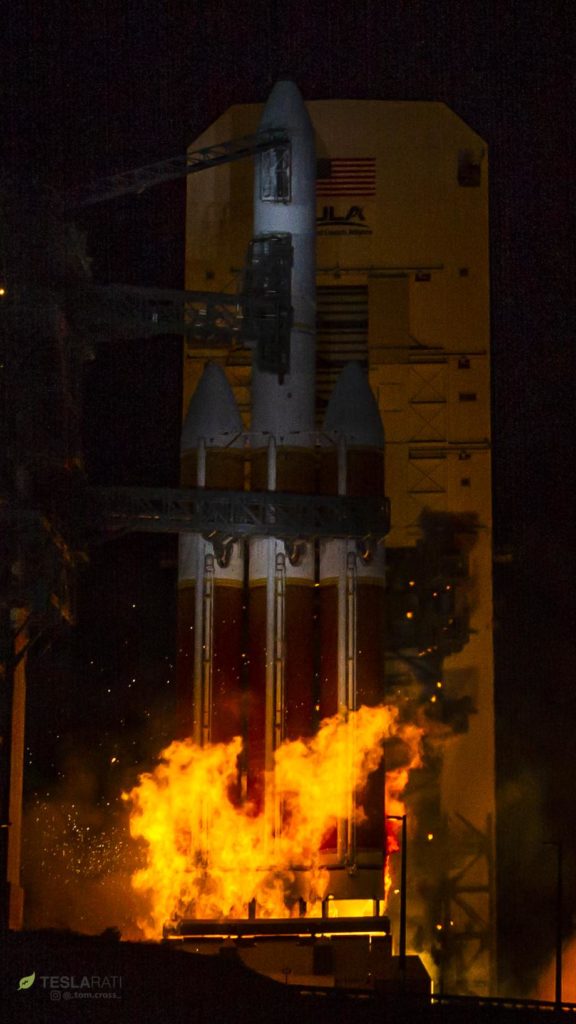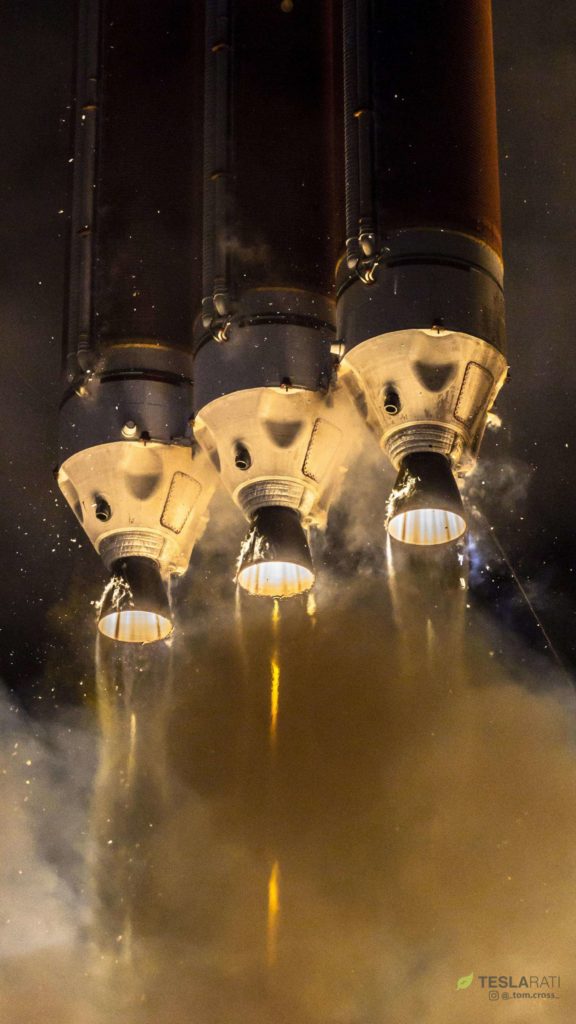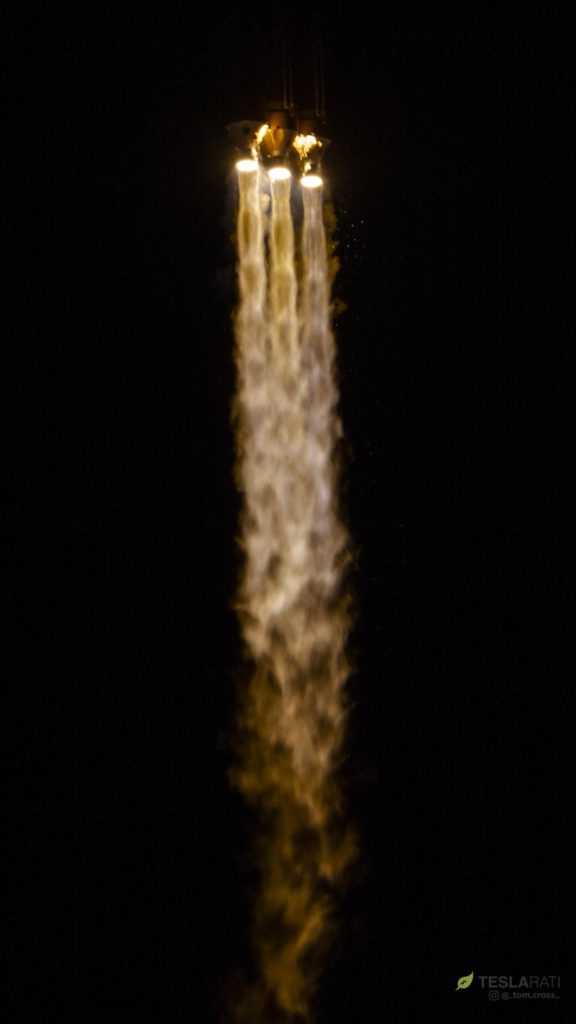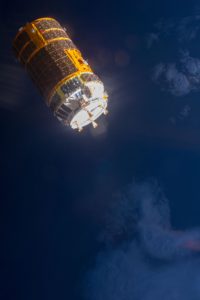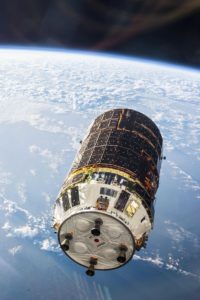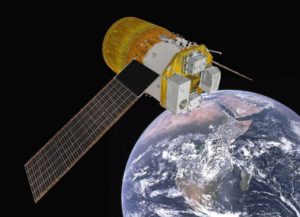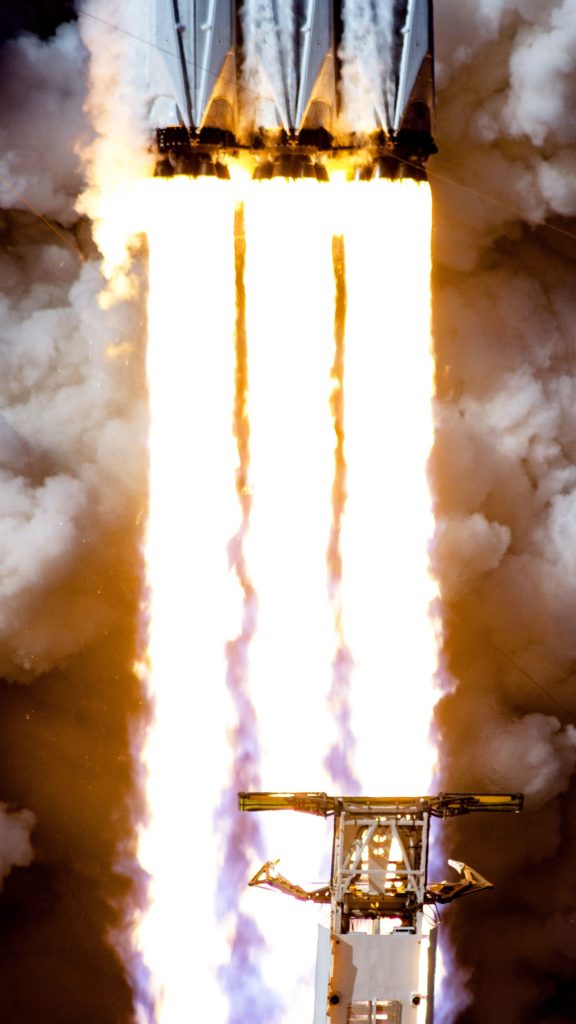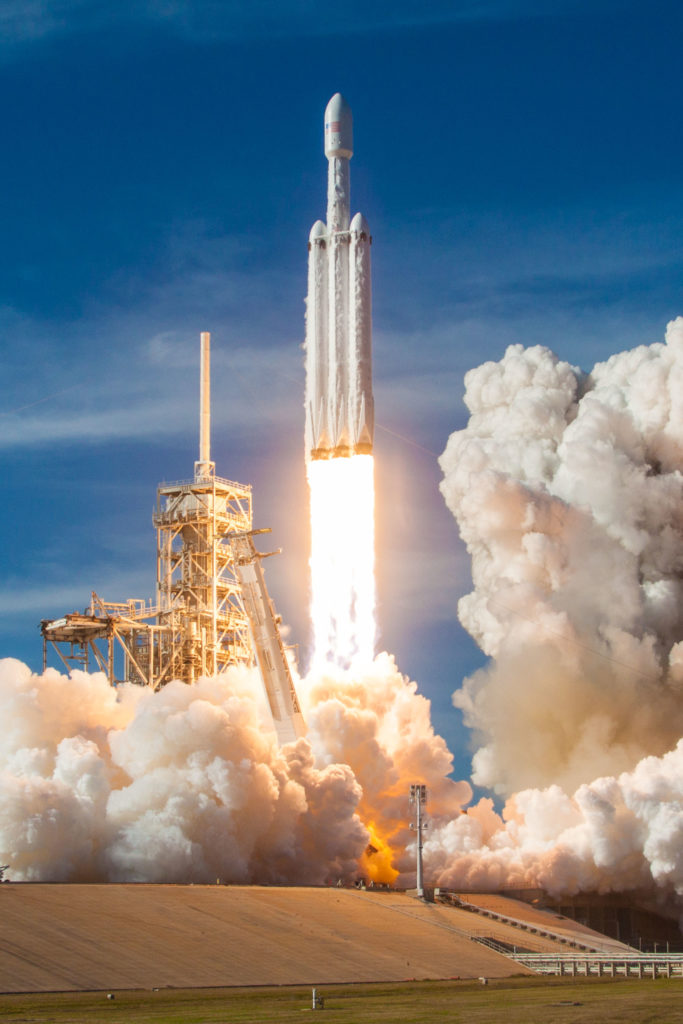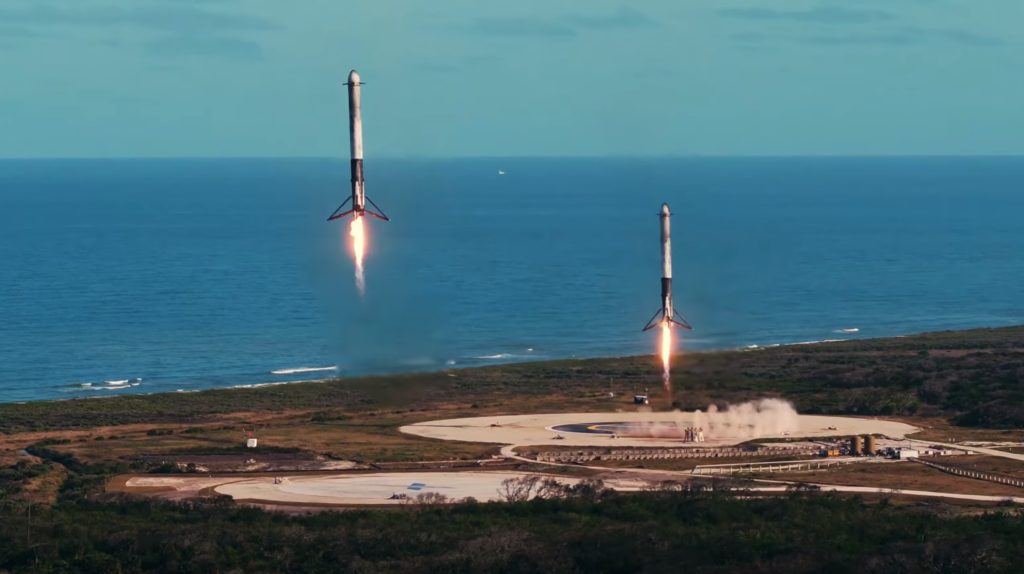

SpaceX
SpaceX’s Falcon Heavy eyed by Europe/Japan as ULA nails spectacular Delta Heavy launch
According to RussianSpaceWeb, SpaceX’s Falcon Heavy rocket is under serious consideration for launches of major European and Japanese payloads associated with the Lunar Orbital Platform-Gateway (formerly the Deep Space Gateway).
Currently targeting launch readiness in the mid-2020s, those heavy scientific and exploratory government payloads are eyeing Falcon Heavy at the same time as the United Launch Alliance’s (ULA) Delta IV Heavy – the most powerful operational rocket prior to FH’s debut – is busy wrapping up a scientific launch for NASA and prepping for another launch in September for its singular anchor customer, the National Reconnaissance Office (NRO).
https://twitter.com/_TomCross_/status/1028599075002896384
A breathtaking mission to the sun
United Launch Alliance (ULA) has just completed the ninth successful launch of its Delta IV Heavy rocket, originally developed by Boeing in the 1990s and debuted in 2004 before the company’s launch vehicle subsidiary joined forces with Lockheed Martin’s own rocket branch. Delta Heavy’s August 12th mission saw the rocket send a small NASA payload known as Parker Solar Probe (PSP) on a trajectory that will eventually place the craft closer to the Sun than any human-made object before it. In pursuit of a better understanding of how exactly our solar system’s namesake functions and behaves, PSP will also become the fastest object ever created by humans, traveling at an extraordinary 200 km/s (120 mi/s) at the zenith of its deepest periapses (the point at which PSP is closest to the sun).
In a fitting send-off for the small heat-shielded spacecraft, Delta IV Heavy’s launch was a spectacle to behold, with clear skies and the cover of darkness combining to magnify the best of the rocket’s telltale features. Upon ignition of its three massive RS-68 rocket engines, each producing over 700,000 lb-ft of thrust, the rocket is held down for several seconds in a process that famously culminates in what appears to be self-immolation just before liftoff, a consequence of the rocket burning off excess hydrogen fuel expelled during the ignition process. Unlike Falcon 9’s dirtier kerosene-oxygen combustion, Delta Heavy’s hydrogen and oxygen fuel produce a flame that is nearly transparent, aside from a bright orange tint created by materials in each engine’s ablative (read: designed to disintegrate) nozzle.
- Delta IV Heavy opts for ‘medium-well’ just before launch. (Tom Cross)
- The extraordinary might of Delta IV Heavy’s hydrolox-burning RS-68A engines, producing a combined 2.1 million pounds of thrust at liftoff. (Tom Cross)
- Delta IV Heavy takes to the sky on its tenth launch, with Parker Solar Probe in tow. (Tom Cross)
- Delta IV Heavy takes to the sky on its tenth launch, with Parker Solar Probe in tow. (Tom Cross)
While Delta IV Heavy has used one of its other nine successful launches for a NASA payload (a test flight of the Orion capsule), all seven remaining missions were conducted for the USAF (1) and the National Reconnaissance Office (NRO; 6), and all six remaining missions on the rocket’s manifest also happen to be for the NRO. Put simply, Delta IV Heavy would not exist today if the NRO did not have an explicit and unflappable need for the capabilities it offers. The primary downside is cost: DIVH costs at least $350 million and usually more than $400m per launch. Thankfully for ULA, the NRO has very few problems with money, and the agency’s estimated annual budget of $10 billion (2013) is more than half of NASA’s entire budget.
After Falcon Heavy’s successful debut, Delta IV Heavy’s monopoly over heavyweight NRO and USAF payloads is rapidly coming to an end, and both agencies are almost certainly attempting to equally quickly certify SpaceX’s newest rocket for critical national security space (NSS) launches. With that influx of the slightest hint of competition, Delta IV Heavy’s ~$400 million price tag starts to look rather painful in comparison to Falcon Heavy’s cost ceiling of around $150 million, potentially much less in the event that 1-3 of its boosters are recoverable. That competition likely won’t kill Delta IV Heavy, thanks entirely to the anchor support of the NRO, but it most certainly will guarantee that Delta Heavy is retired the moment ULA’s next-gen Vulcan rocket is ready to take over, likely no earlier than 2024.
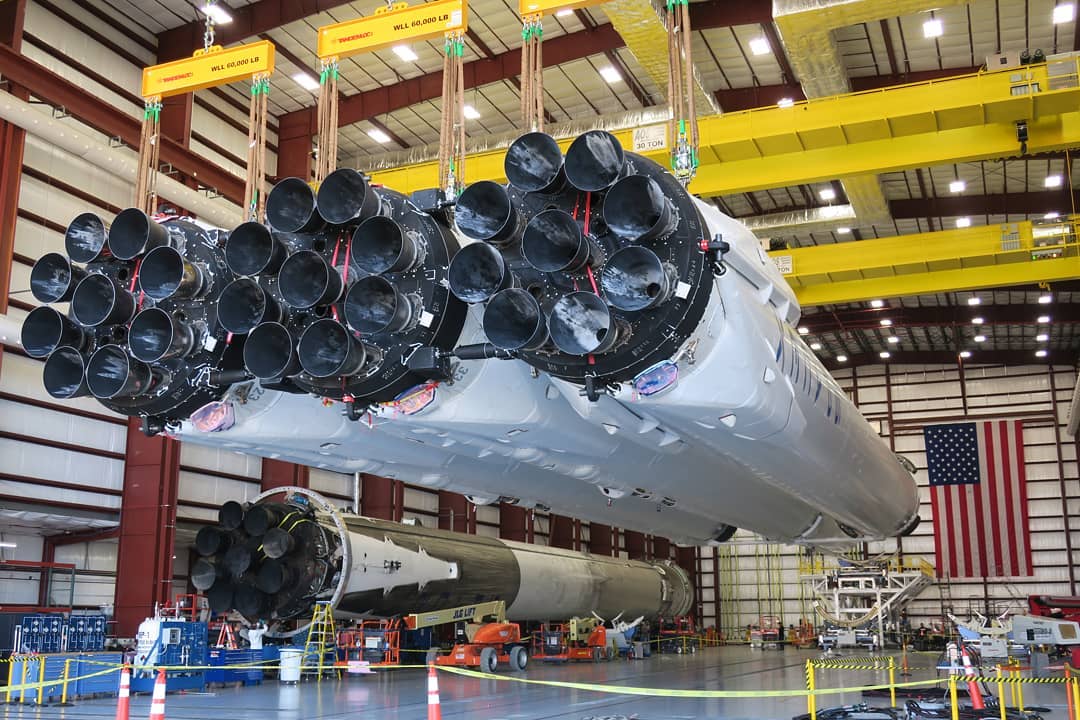
Outside of the NRO, however, there is a surprising amount of interest in Falcon Heavy for interesting (and heavy) government payloads, particularly with respect to the NASA/ESA/JAXA/Roscosmos cooperative lunar space station, known as the Lunar Orbital Platform-Gateway.
Falcon Heavy enters the mix
The first payload considering Falcon Heavy for launch services is the Japanese Space Agency’s (JAXA) HTV-X, and upgraded version of a spacecraft the country developed to assist in resupplying the International Space Station (ISS). HTV-X is primarily being designed with an ISS-resupply role still at the forefront, but Russianspaceweb recently reported that JAXA is seriously considering the development of a variant of the robotic spacecraft dedicated to resupplying the Lunar Orbital Platform-Gateway (LOPG; and I truly wish I were joking about both the name and acronym).
- JAXA’s first-generation HTV spacecraft on its fourth of nine planned launches, 2013. (NASA)
- JAXA’s first-generation HTV spacecraft on its fourth of nine planned launches, 2013. (NASA)
- The best available visualization of HTV-X, Japan’s upgraded and more affordable ISS resupply spacecraft. (JAXA)
As the name suggests, LOPG is fundamentally a shrunken, upgraded copy of the present-day International Space Station but with its low Earth orbit swapped for an orbit around the Moon. Why, you might ask? It happens that that question is far less sorted at this point than “how”, and there’s a fairly strong argument to be made that NASA is simply attempting to create a low-hanging-fruit destination for the chronically delayed SLS rocket and Orion spacecraft it routinely spends ~20% of its annual budget on. The alternatives to such a crewed orbital outpost are actually landing on the Moon and building a base or dramatically ramping development of foundations needed to enable the first human missions to Mars.
ARTICLE: Cislunar station gets thumbs up, new name in President's budget request – https://t.co/a1XhAPZ7ot
– By Philip Sloss.
(Numerous renders by Nathan Koga, including the epic one below) pic.twitter.com/j0cr2ze7qG
— NSF – NASASpaceflight.com (@NASASpaceflight) March 16, 2018
Regardless of the LOPG’s existential merits, a lot of energy (and money) is currently being funneled into planning and initial hardware development for the lunar station’s various modular segments. JAXA is currently analyzing ways to resupply LOPG and its crew complement with its HTV-X cargo spacecraft, currently targeting its first annual ISS resupply mission by the end of 2021. While JAXA will use its own domestic H-III rocket to launch HTV-X to the ISS, that rocket simply is not powerful enough to place a minimum of ~10,000 kg (22,000 lb) on a trans-lunar insertion (TLI) trajectory. As such, JAXA is examining SpaceX’s Falcon Heavy as a prime (and affordable) option: by recovering both side boosters on SpaceX’s drone ships and sacrificing the rocket’s center core, a 2/3rds-reusable Falcon Heavy should be able to send as much as 20,000 kg to TLI (lunar orbit), according to comments made by CEO Elon Musk.
- Falcon Heavy booster ice peeling away and vaporizing in the fire of the engines. (Photo: Tom Cross)
- Falcon Heavy’s launch debut from Pad 39A, February 2018. (SpaceX)
- Falcon Heavy’s side boosters seconds away from near-simultaneous landings at Landing Zones 1 and 2. (SpaceX)
That impressive performance would also be needed for another LOPG payload, this time for ESA’s 5-6 ton European System Providing Refueling Infrastructure and Telecommunications (ESPRIT) lunar station module. That component is unlikely to reach launch readiness before 2024, but ESA is already considering Falcon Heavy (over its own Ariane 6 rocket) in order to save some of the module’s propellant. Weighing 6 metric tons at most, Falcon Heavy could most likely launch ESPRIT while still recovering all three of its booster stages.
Regardless of the outcomes of those rather far-off launch contracts, it’s clear that some sort of market exists for Falcon Heavy and even more clear that its injection of competition into the stagnant and cornered heavy-lift launch segment is being globally welcomed with open arms.
For prompt updates, on-the-ground perspectives, and unique glimpses of SpaceX’s rocket recovery fleet check out our brand new LaunchPad and LandingZone newsletters!

Elon Musk
Elon Musk’s Biggest Revelations on AI, Robots, and the Future of Work from the Moonshots Podcast

Elon Musk’s appearance on the Moonshots with Peter Diamandis podcast was packed with bold predictions, candid admissions, and surprising tech insights. The nearly three-hour conversation covered everything from artificial intelligence to humanoid robots, geopolitics, and the future of work. Here are the top 10 most intriguing takeaways:
-
Aggressive AGI Timeline Predictions
Musk offered a detailed view on when artificial general intelligence (AGI) could emerge, suggesting it may arrive sooner than many expect, emphasizing both transformative potential and risks.
-
U.S. vs. China in the AI Race
He discussed the strategic competition between the United States and China over AI development, noting that geopolitical dynamics will shape how and who leads in the next decades.
-
Future of Job Markets
Musk touched on how AI and automation could reshape employment, predicting massive boosts in productivity alongside potential disruptions in traditional work structures.
-
Clean Energy Transition
A recurring theme was the role of clean energy in future economies, with Musk reiterating the importance of scaling sustainable power generation and storage.
-
Humanoid Robots Are Coming
On the podcast, Musk elaborated on Tesla’s work on humanoid robots, hinting at timelines and applications that go beyond factories to general-purpose assistance.
-
Tesla Roadster “Last Human-Driven Car”
Outside the core discussion topics, Musk teased features of the upcoming Tesla Roadster — calling it “the best of the last of the human-driven cars” and suggesting safety won’t be its main selling point.
-
The Role of AI in Clean Energy and Robotics
Linking AI to both energy optimization and robotics, Musk explained how smarter systems could accelerate decarbonization and task automation across industries.
-
U.S. Innovation Leadership
Musk argued that maintaining American leadership in key tech sectors like AI, space, and robotics should be a national priority, with thoughtful policy and investment.
-
Job Creation vs. Job Elimination
While acknowledging automation’s disruptive effects, he also outlined scenarios where new industries and opportunities could emerge, particularly in AI, space, and advanced manufacturing.
-
Long-Term Vision for Humanity
Throughout the conversation, Musk revisited his long-term philosophical views — including a belief in humanity’s responsibility to become a multi-planetary and technologically empowered species.
Whether you agree with Musk’s optimism or not, the podcast offers a window into the thinking of one of the most influential figures in tech today, in and why his visions continue to spark debate and inspiration.
Elon Musk
Starlink achieves major milestones in 2025 progress report
Starlink wrapped up 2025 with impressive growth, adding more than 4.6 million new active customers and expanding service to 35 additional countries, territories, and markets.

Starlink wrapped up 2025 with impressive growth, adding more than 4.6 million new active customers and expanding service to 35 additional countries, territories, and markets. The company also completed deployment of its first-generation Direct to Cell constellation, launching over 650 satellites in just 18 months to enable cellular connectivity.
SpaceX highlighted Starlink’s impressive 2025 progress in an extensive report.
Key achievements from Starlink’s 2025 Progress
Starlink connected over 4.6 million new customers with high-speed internet while bringing service to 35 more regions worldwide in 2025. Starlink is now connecting 9.2 million people worldwide. The service achieved this just weeks after hitting its 8 million customer milestone.
Starlink is now available in 155 markets, including areas that are unreachable by traditional ISPs. As per SpaceX, Starlink has also provided over 21 million airline passengers and 20 million cruise passengers with reliable high-speed internet connectivity during their travels.
Starlink Direct to Cell
Starlink’s Direct to Cell constellation, more than 650 satellites strong, has already connected over 12 million people at least once, marking a breakthrough in global mobile coverage.
Starlink Direct to Cell is currently rolled out to 22 countries and 6 continents, with over 6 million monthly customers. Starlink Direct to Cell also has 27 MNO partners to date.
“This year, SpaceX completed deployment of the first generation of the Starlink Direct to Cell constellation, with more than 650 satellites launched to low-Earth orbit in just 18 months. Starlink Direct to Cell has connected more than 12 million people, and counting, at least once, providing life-saving connectivity when people need it most,” SpaceX wrote.
Elon Musk
Starlink passes 9 million active customers just weeks after hitting 8 million
The milestone highlights the accelerating growth of Starlink, which has now been adding over 20,000 new users per day.

SpaceX’s Starlink satellite internet service has continued its rapid global expansion, surpassing 9 million active customers just weeks after crossing the 8 million mark.
The milestone highlights the accelerating growth of Starlink, which has now been adding over 20,000 new users per day.
9 million customers
In a post on X, SpaceX stated that Starlink now serves over 9 million active users across 155 countries, territories, and markets. The company reached 8 million customers in early November, meaning it added roughly 1 million subscribers in under seven weeks, or about 21,275 new users on average per day.
“Starlink is connecting more than 9M active customers with high-speed internet across 155 countries, territories, and many other markets,” Starlink wrote in a post on its official X account. SpaceX President Gwynne Shotwell also celebrated the milestone on X. “A huge thank you to all of our customers and congrats to the Starlink team for such an incredible product,” she wrote.
That growth rate reflects both rising demand for broadband in underserved regions and Starlink’s expanding satellite constellation, which now includes more than 9,000 low-Earth-orbit satellites designed to deliver high-speed, low-latency internet worldwide.
Starlink’s momentum
Starlink’s momentum has been building up. SpaceX reported 4.6 million Starlink customers in December 2024, followed by 7 million by August 2025, and 8 million customers in November. Independent data also suggests Starlink usage is rising sharply, with Cloudflare reporting that global web traffic from Starlink users more than doubled in 2025, as noted in an Insider report.
Starlink’s momentum is increasingly tied to SpaceX’s broader financial outlook. Elon Musk has said the satellite network is “by far” the company’s largest revenue driver, and reports suggest SpaceX may be positioning itself for an initial public offering as soon as next year, with valuations estimated as high as $1.5 trillion. Musk has also suggested in the past that Starlink could have its own IPO in the future.
